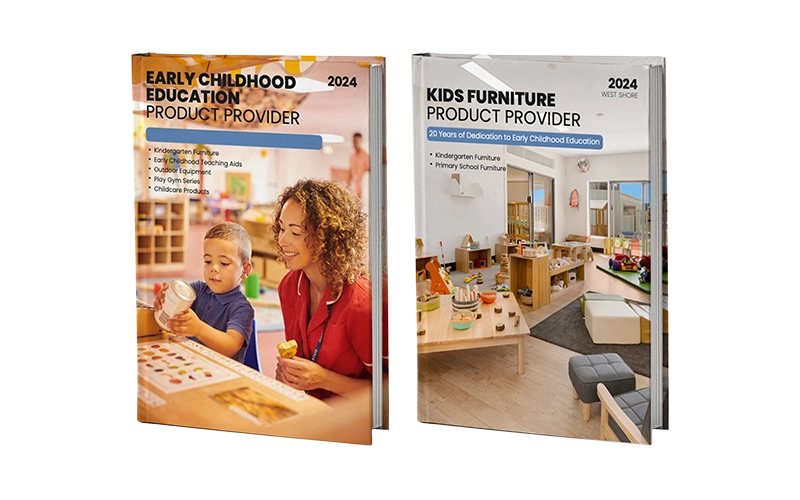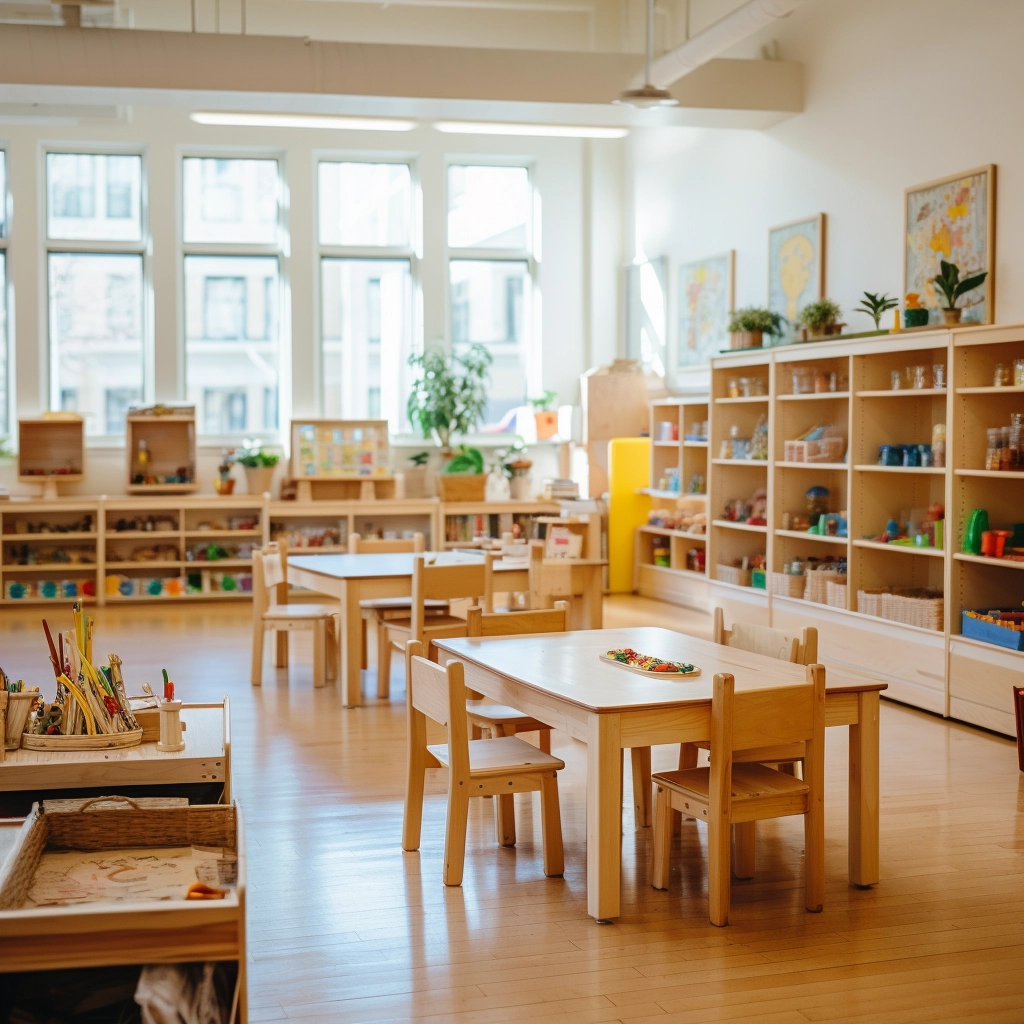Are you looking for fresh and meaningful Spring Activities for Preschoolers? Do you want to create a seasonal learning environment that engages children’s senses and supports their development? Do you seek hands-on ideas combining fun, education, and nature-based exploration this spring?
Spring Activities for Preschoolers are a powerful way to bring learning to life. With warmer weather and nature blooming all around, this season opens the door to discovery, movement, and creativity. From outdoor exploration to nature-inspired art, spring offers endless opportunities to spark curiosity and enrich early education.
In this article, I’ll share 15 super spring activities that are easy to implement, align with Montessori and Reggio principles, and bring joy and purpose to your preschool learning environment.
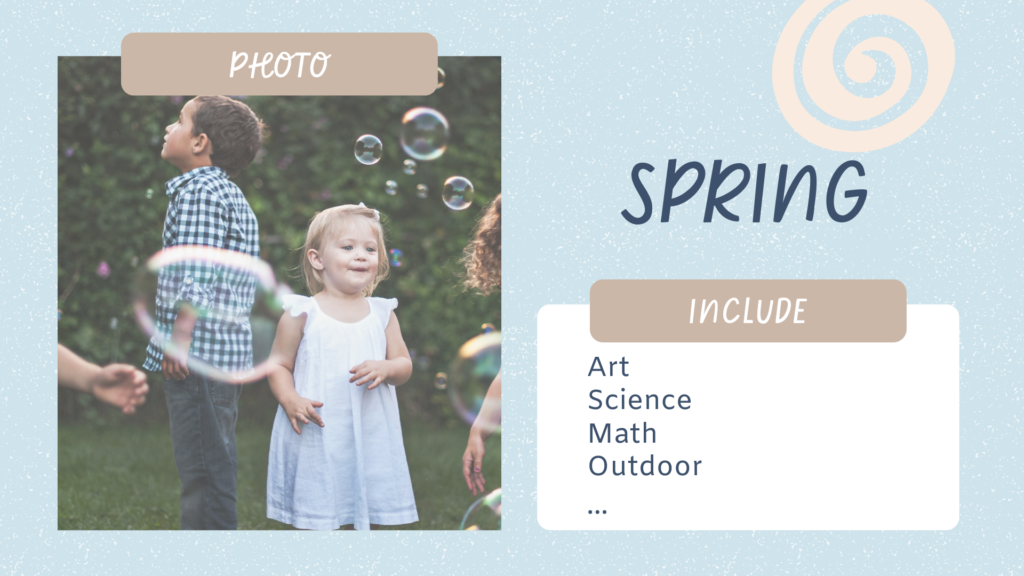
Spring Themes for Preschool
In early childhood education, a good theme is like a roadmap. It guides your lessons, connects learning goals, and engages kids through storytelling, visuals, and discovery.
Spring is a goldmine for themed learning in preschool. I always recommend that educators and kindergarten buyers align their materials, toys, and activities with seasonal motifs—especially in spring.
Popular spring themes for preschool include:
- Growing Plants and Gardening – children learn about seeds, soil, water, and growth.
- Insects and Bugs – a perfect introduction to lifecycles, observation skills, and gentle science.
- Weather Changes – introduce concepts like rain, clouds, wind, and sunshine.
- Baby Animals: Spring is full of symbolism around new life. It is excellent for literacy, art, and storytelling.
- Rainbows and Colors – ideal for color recognition, sorting, and mixing.
You can use these themes to build complete weekly curriculums or rotate them as part of a Reggio or Montessori-inspired classroom approach. The goal is to connect your educational goals with what children are naturally seeing and experiencing outdoors.
Spring Art Activities for Preschoolers
Spring is the most colorful time of the year—and for preschoolers, that means it’s the perfect season to create, explore, and express through art. At this stage of development, art is not just about pretty results. It’s about fine motor skills, sensory exploration, emotional expression, and creative problem-solving. And spring, with its natural beauty and symbols of growth, offers endless inspiration.
When designing preschool art activities for spring, I always advise kindergarten educators to choose open-ended projects that allow children to explore seasonal colors, textures, and shapes. From blooming flowers to buzzing bees and rainy skies, spring gives us themes that tie directly into early learning goals.
Here are my favorite spring art activities for preschool classrooms—each simple, effective, and engaging for children aged 2 to 6.
Nature Collage Creations
Creating nature collages is one of the best ways to connect art and the outdoors. Take your class on a short nature walk around the school or garden. Ask children to collect small items like flowers, grass, twigs, or leaves. Back in the classroom, give each child a large sheet of paper and a pot of glue.
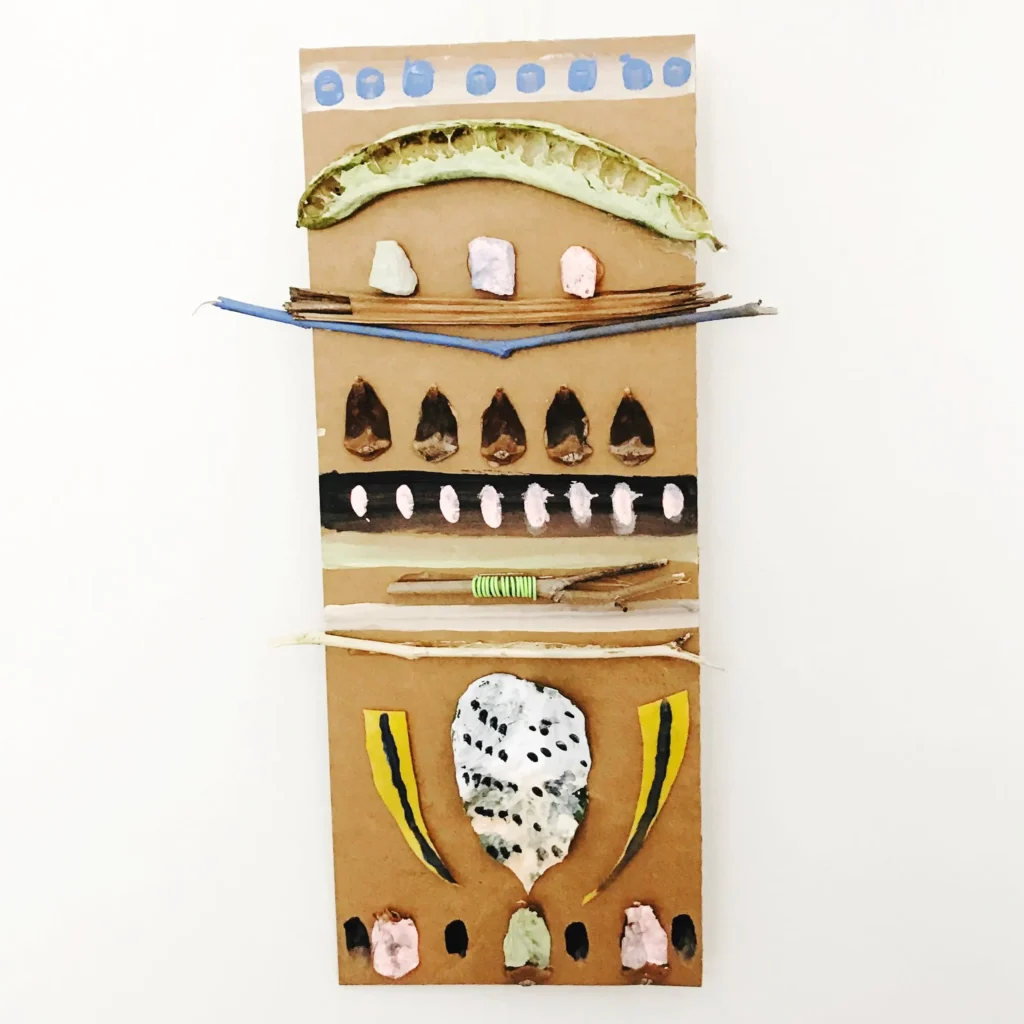
Let them arrange and stick the natural materials however they like. The result is a unique, tactile art piece that reinforces patterning, sorting, and material recognition. No two collages will be alike—making this project as individual as the child creating it.
This activity aligns beautifully with Montessori and Reggio Emilia principles—natural materials, hands-on discovery, and self-expression.
Fingerprint Flower Art
Spring flowers are everywhere, and one of the easiest, most enjoyable ways to recreate them is with fingerprint painting. Provide each child with paper, paint in spring colors (pink, yellow, purple, green), and a smock. Guide them to press their fingertips into the paint and create circular patterns that form blossoms, stems, and leaves.
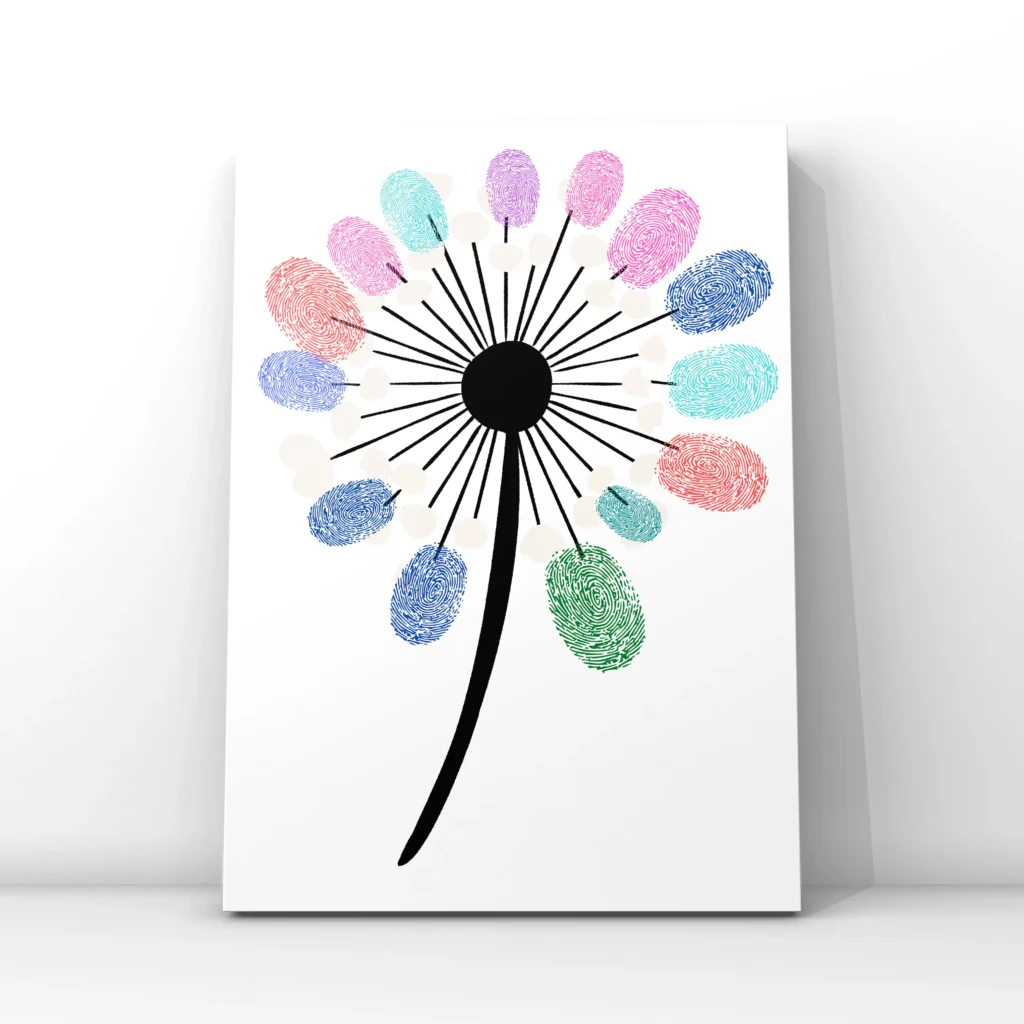
You can show examples or let them discover their methods. Some might create tulips with side-stamped thumbs, while others may dot an entire garden scene. This activity strengthens fine motor control and allows children to experiment with color mixing and composition.
It’s simple, mess-friendly, and readily displayed in a spring-themed classroom gallery.
Coffee Filter Butterflies
This classic preschool art activity combines science and art. Start with white coffee filters, markers, and spray bottles of water. Children color the filters using markers—dots, lines, shapes, anything they like. Then, lightly spray the filters with water to watch the colors blend and “bleed” into watercolor-style effects.
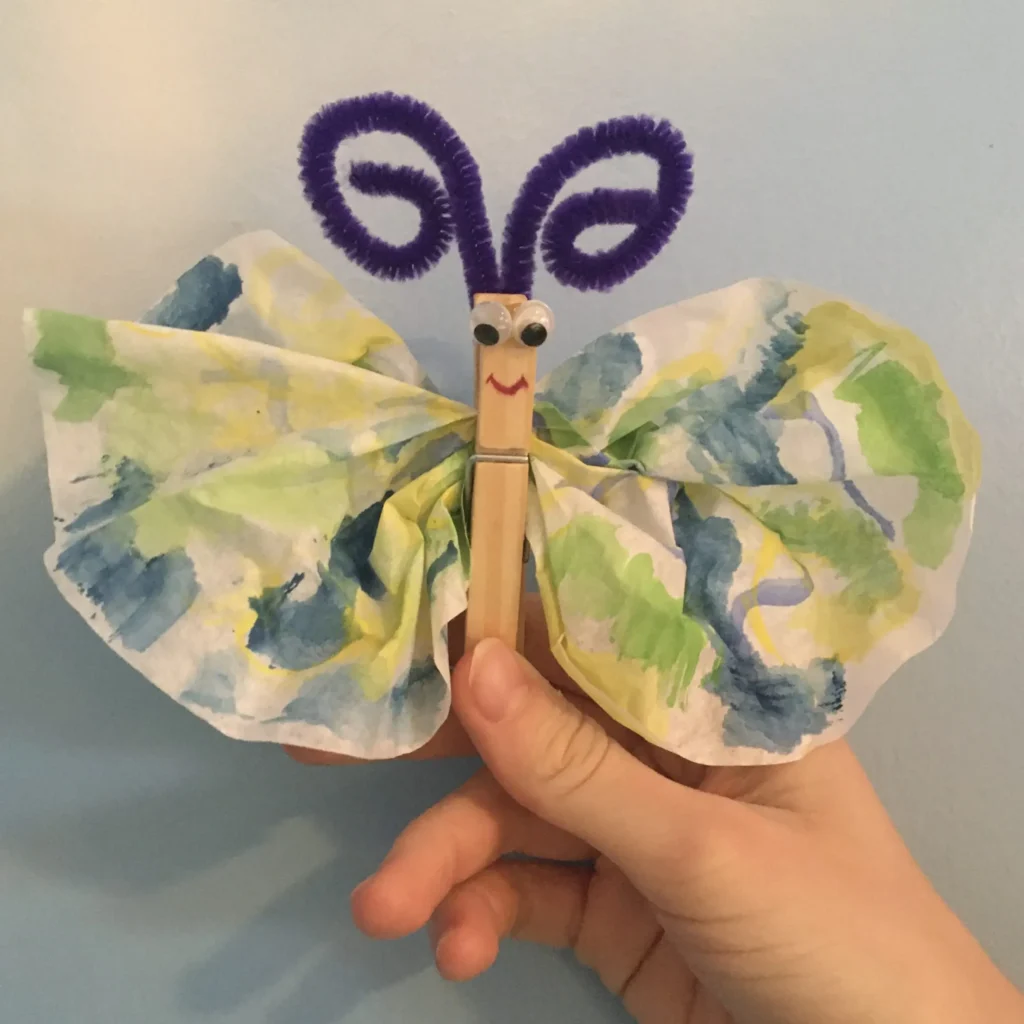
Once dry, pinch the filter’s center and clip it with a wooden clothespin to form a butterfly. For extra fun, you can add googly eyes or pipe cleaner antennas.
This project supports color exploration, cause, and effect and introduces essential symmetry. Plus, kids love watching their butterflies come to life.
Torn Paper Rainbows
Tearing paper may sound simple, but it’s a powerful fine-motor exercise for preschoolers. To make torn paper rainbows, prepare colored construction paper in red, orange, yellow, green, blue, and purple. Children tear the paper into small pieces and then glue the pieces in arcs to form a rainbow.

This spring art activity teaches color order, hand control, and spatial awareness. It’s also great for children who may struggle with scissors, giving them a different way to manipulate materials.
Display the finished rainbows on your classroom wall or window to bring instant spring cheer.
Bubble Wrap Printing with Spring Shapes
Introduce texture and printing skills with bubble wrap art. Cut out flower or leaf shapes from cardboard and glue bubble wrap on top. Children dip the bubble side into paint and press it onto paper, creating a fun dotted texture.
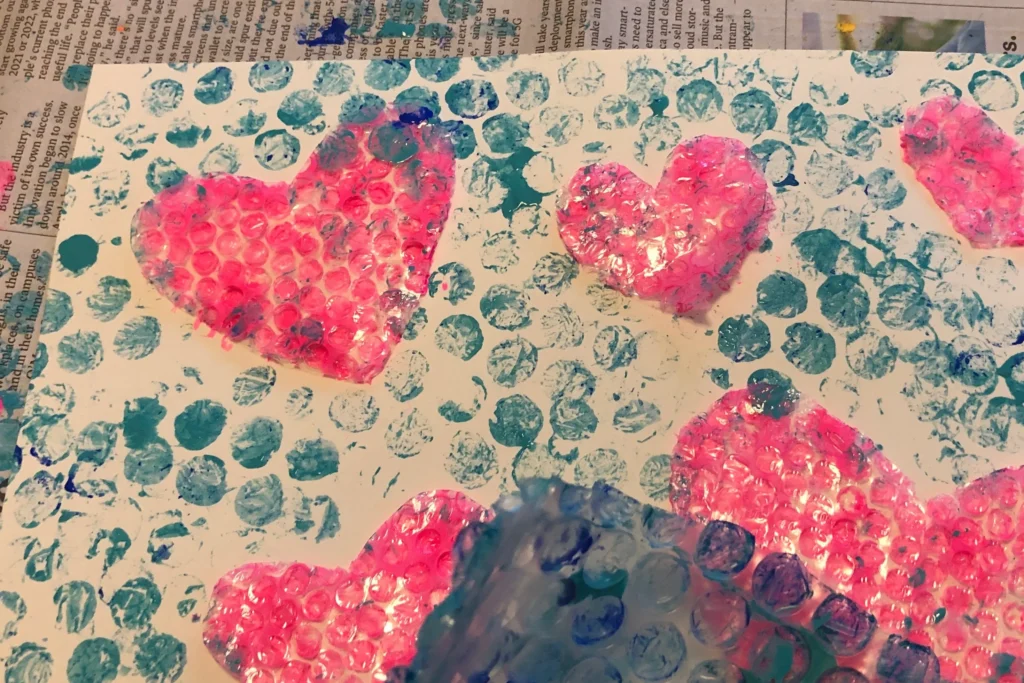
This sensory art activity is ideal for exploring repetition, stamping, and texture awareness. You can vary it by using seasonal shapes—like raindrops, bees, or garden tools—and letting children invent their stamps.
It’s a fantastic combination of sensory exploration and creative expression, suitable even for younger toddlers in mixed-age classrooms.
Spring Mural Collaboration
One of the most potent art experiences in preschool is collaborative mural-making. Hang a long sheet of butcher paper on a wall or across a table. Choose a spring theme like “Our Garden,” “Spring Weather,” or “Bugs in the Grass.” Invite the children to work together over several days to add their drawings, painted flowers, sponge-stamped clouds, or glued-on natural materials.
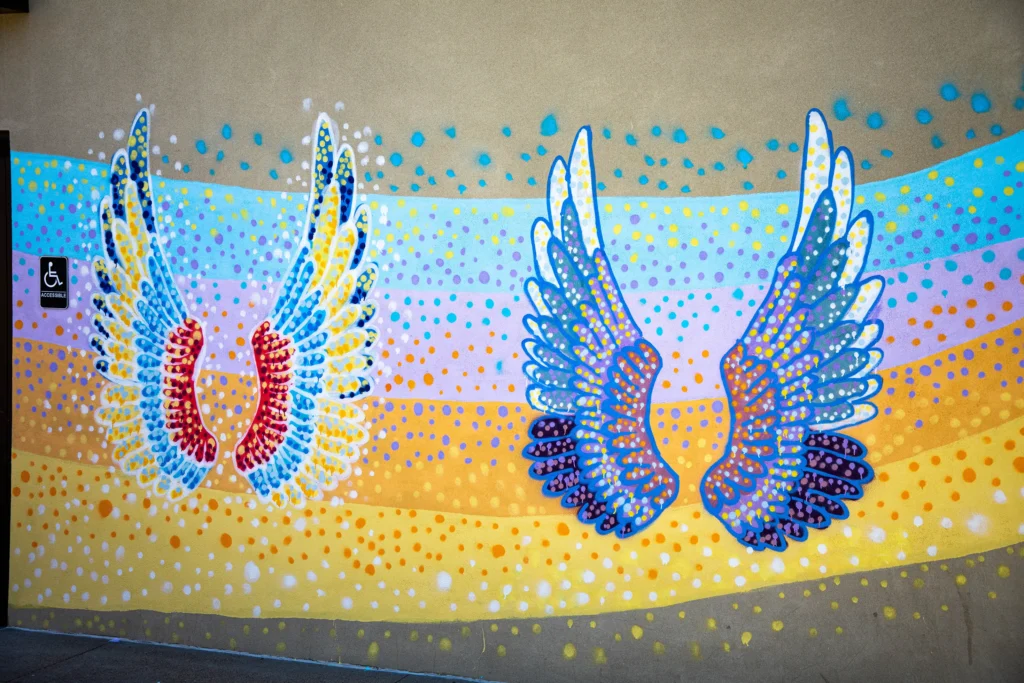
This open-ended project supports social-emotional learning, teamwork, and visual storytelling. Teachers can even document the process with photos to show how the mural evolved.
It’s especially effective in Reggio-inspired classrooms, where the process is just as valuable as the final artwork.
Recycled Spring Sculpture
Art doesn’t have to be flat! Encourage children to think in 3D with spring sculptures made from recycled materials—cardboard tubes, egg cartons, bottle caps, and paper scraps. Let them build flowers, insects, or garden scenes by gluing or taping pieces together and painting them in spring tones.
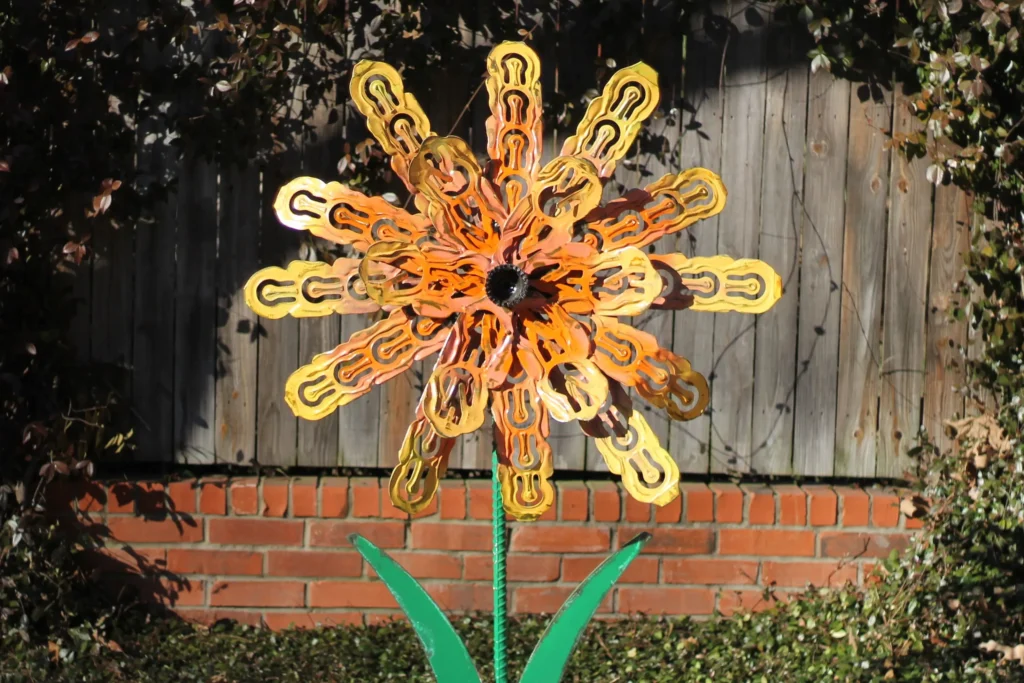
This activity encourages engineering thinking, problem-solving, and the use of eco-conscious materials. It also gives children the freedom to construct something unique and meaningful.
These preschool art activities for spring don’t just create beautiful classroom displays—they help children build critical early learning foundations through color, touch, and imagination. Whether you’re a school director setting up your curriculum or an educator looking for fresh spring inspiration, these projects bring learning to life in every corner of your classroom.
Spring Science Activities for Preschoolers
Spring offers preschoolers an ideal opportunity to turn everyday nature experiences into meaningful science learning. Through observation, prediction, and experimentation, children understand the world around them without needing complex tools. Here are four hands-on science activities perfect for spring, each focusing on exploration and discovery.
Seed Observation Jars
Preschoolers can use transparent jars to watch bean seeds sprout and grow over several days. Line the jars with damp cotton balls or paper towels, place the seeds near the edge, and position them in sunlight. This activity introduces the plant life cycle, encouraging children to observe roots, stems, and leaves as they emerge. Daily drawing or verbal journaling deepens the learning, reinforcing sequencing, patience, and vocabulary.

Melting Ice Experiment
This sensory-rich experiment helps preschoolers explore how temperature changes affect matter. Freeze small spring items—like flower petals or plastic insects—inside ice cubes. Children can then use warm water, salt, or droppers to melt the ice and free the objects. Along the way, they understand melting, states of matter, and cause-effect relationships. Guiding questions like “What made it melt faster?” spark early scientific thinking.
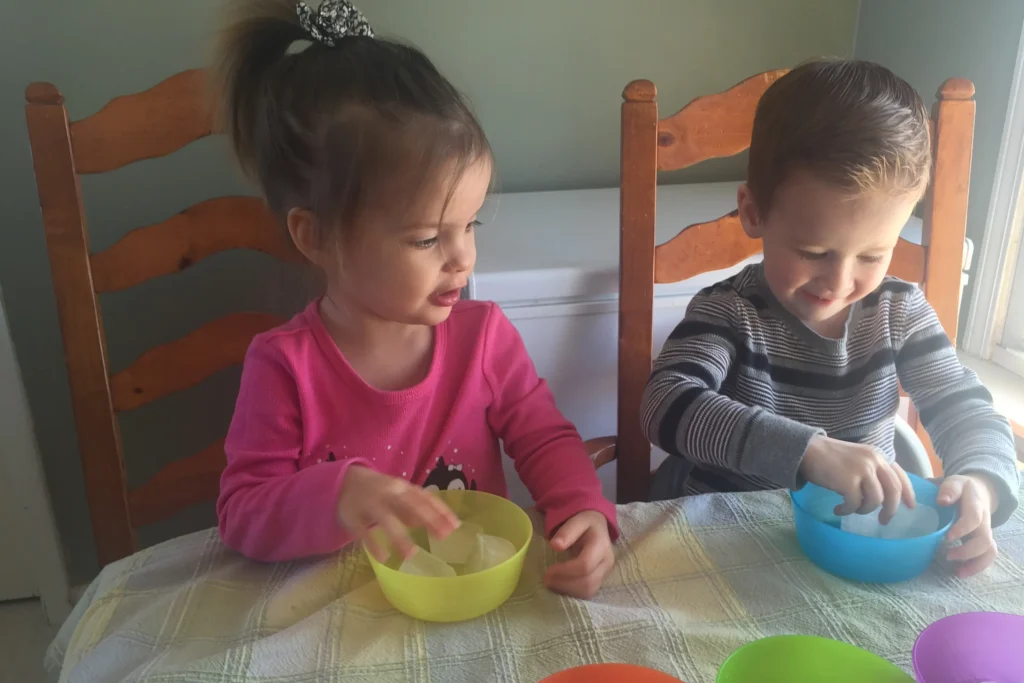
Sink or Float with Spring Items
Fill a water table or sensory bin with spring-themed items such as leaves, twigs, rocks, and flowers. Before placing each object in the water, children predict whether it will sink or float and test their ideas. This builds observation skills, hypothesis-making, and vocabulary related to weight, size, and materials. It also introduces classification and sorting in a fun, hands-on format that’s easy to repeat with different items.

Bug Habitat Exploration
Exploring outdoor areas or garden spaces allows children to observe insects up close. Provide magnifying glasses or clear containers for temporarily observing bugs like ants, ladybugs, or worms. Children notice physical features, movement patterns, and habitats as they explore. These observations build empathy, curiosity, and basic knowledge of animal behavior. Encourage children to ask questions and describe what they see, supporting science and language development.
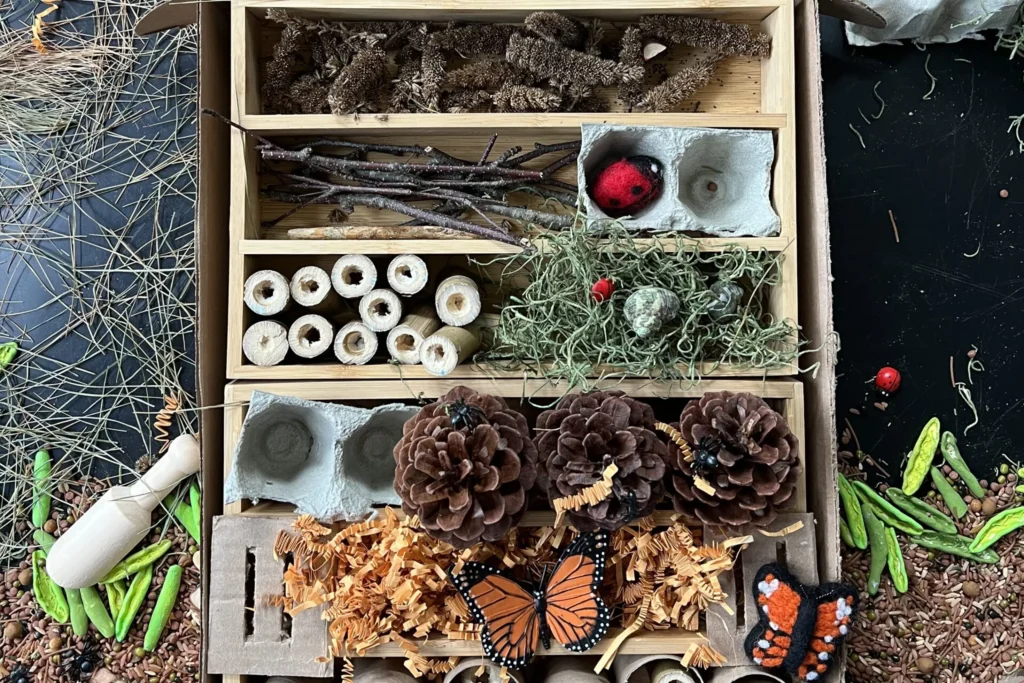
Preschool Math Activities for Spring
When most people think of spring, math probably isn’t the first thing that comes to mind—but for us in early education, spring is full of natural math opportunities. From counting petals to measuring raindrops, preschoolers can engage in hands-on learning that builds number sense, patterns, sorting, and basic geometry—all in a fun, seasonal way.
As someone who works directly with kindergarten buyers and school founders, I always recommend using themed learning stations and open-ended materials to support math exploration. The goal is to embed learning into play—so the children don’t even realize how much math they’re doing.
Here are my favorite spring preschool math activities—each aligned with developmental milestones and built for real classroom success.
Flower Petal Counting
This activity is a classic—and for good reason. Start by cutting out large flower centers from colored paper and writing a number in the middle (1–10, depending on age level). Provide small “petals” (paper ovals, stickers, or felt pieces) that children count out and place around each flower.
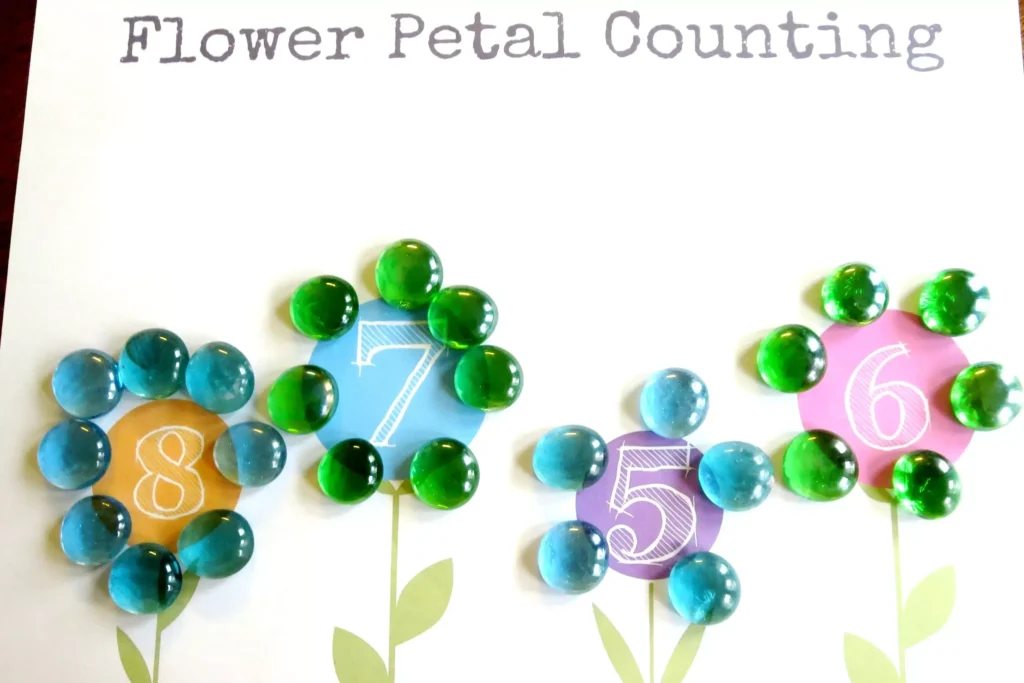
Preschoolers practice one-to-one correspondence, number recognition, and counting accuracy as they match the correct number of petals to each flower. For more advanced learners, you can also scaffold the activity using addition petals or number sentences.
This is easy to set up, mess-free, and perfect for spring bulletin board displays.
Bug Sorting and Graphing
Kids love bugs, and they are a perfect theme for sorting and classifying. Provide plastic bugs (or printed images) in various colors, sizes, and types (ladybugs, ants, bees, etc.). Ask children to sort them by different attributes: color, type, or size.
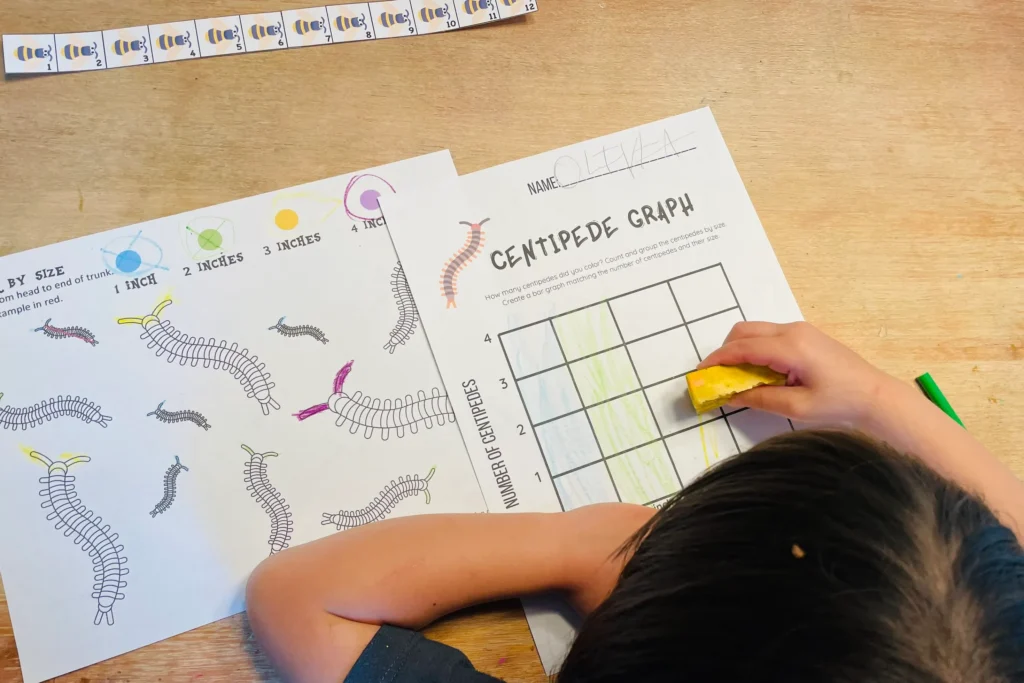
You can take it further by having them count each category and graph the results using blocks or paper bars. This builds categorization, data analysis, and early graphing skills while staying within the spring theme.
It also opens up excellent vocabulary development—words like “more,” “fewer,” “equal,” and “most.”
Measuring with Spring Object
Introduce basic non-standard measurements with items children collect outdoors or in the classroom. Use leaves, flowers, sticks, or even spring-themed manipulatives like raindrop cutouts to measure the length of different objects.
Children can record how many “flowers long” their pencil is or compare which item is “longer” or “shorter.” This introduces measurement vocabulary and spatial reasoning without needing rulers.
This works beautifully on a child-height table with trays of materials and integrates perfectly into Montessori and Reggio-inspired classrooms.
Spring Shape Hunt
Shapes are everywhere in spring. Have your students go on a “shape walk” around the playground or classroom with a clipboard and a simple checklist. Can they find circles in flowerpots, triangles in roof lines, or squares in planters?

Back in the classroom, they can draw or build the shapes they found using sticks, playdough, or blocks. This helps children apply geometric concepts to real-life observations and boosts their ability to identify and recreate shapes.
You can extend the activity by discussing symmetry in leaves and butterflies, introducing geometry early.
Pattern Strips with Spring Items
Provide children with paper strips and a collection of spring-themed items—such as stickers (flowers, bees, sun), colored beads, or foam shapes. Challenge them to create repeating patterns like ABAB, AAB, or ABC.

This activity builds pattern recognition, a foundation for later math and coding logic. It’s also a good fine motor exercise and a chance to construct independent problem-solving skills.
Display their pattern strips on a spring-themed math wall to reinforce the concept over time.
Counting Garden Game
Set up a pretend “garden” with felt vegetable pieces, flower pots, and number cards. Children pick a card and plant many items in their garden space. This activity can be adapted for indoor or outdoor play and easily scaled for different age groups.
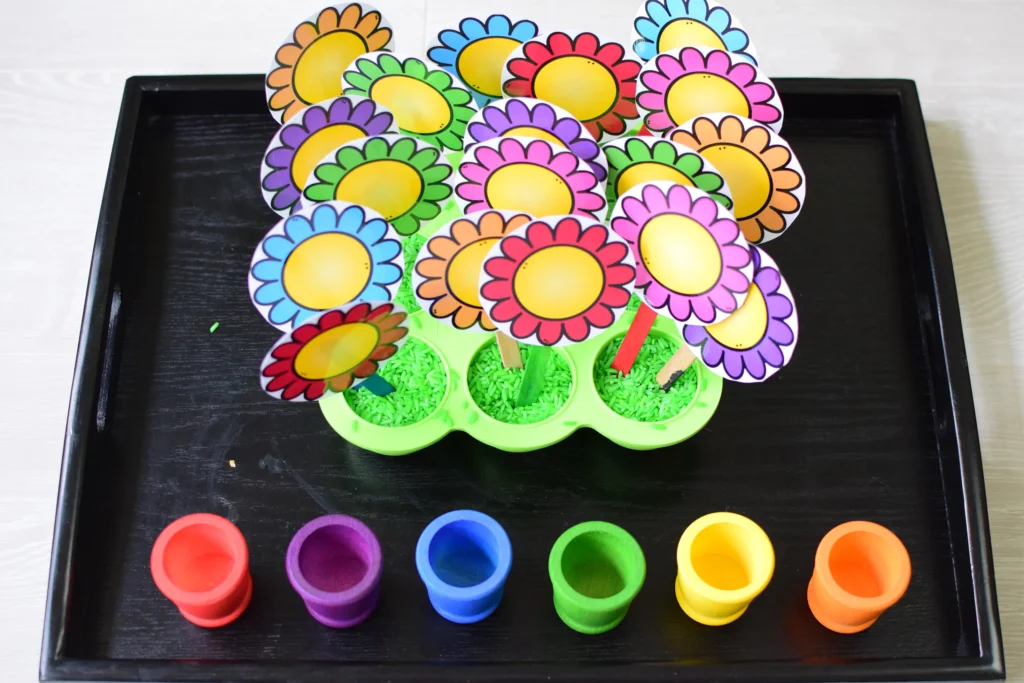
It encourages counting, number matching, and one-to-one correspondence while connecting to life science themes. If you use real mini planters or soil trays, this becomes a sensory-rich, multi-domain learning activity.
Raindrop Number Line
Use laminated raindrop cutouts to build a spring number line on the wall or floor. Children can hop from number to number, place objects to match quantities, or even solve simple math problems by “jumping” to the answer.
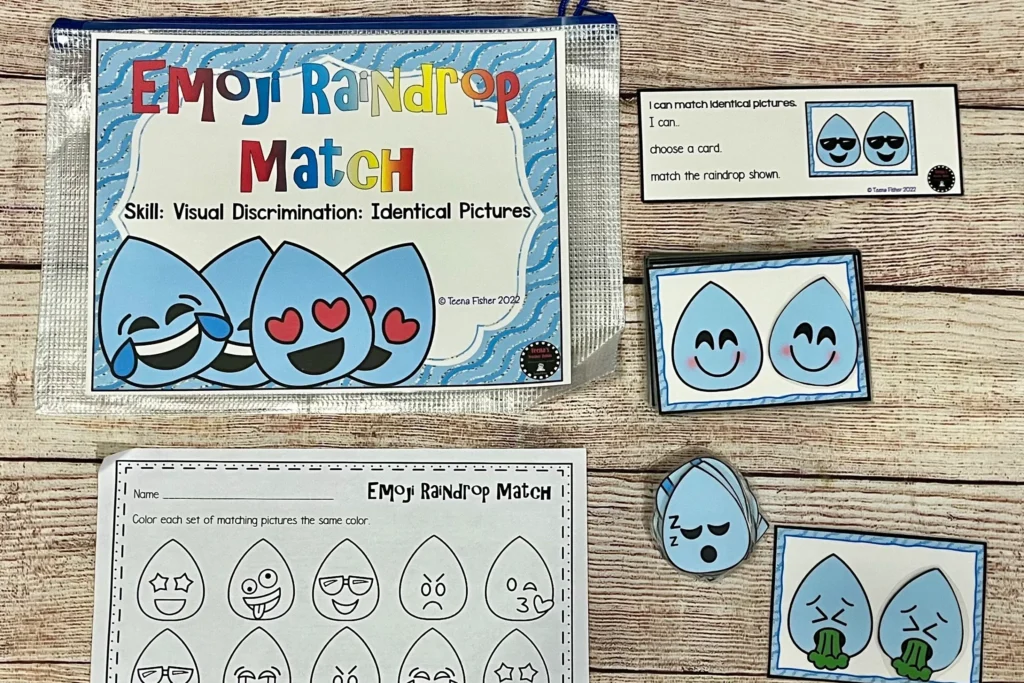
This great movement-based math activity supports gross motor development, number sequencing, and mental math. You can also add clothespins with numbers to practice number order and recognition.
These preschool math activities for spring do more than teach numbers—they help children develop confidence, logic, and independence naturally and joyfully. With the right tools, themes, and furniture setup, you can turn your kindergarten classroom into a place where math and flowers bloom.
Outdoor Spring Activities for Preschoolers
After months of indoor play during winter, preschoolers are naturally drawn to the outdoors as soon as the weather turns warmer. And honestly, so are we. Spring offers endless opportunities for movement, exploration, and discovery outside the classroom. For kindergartens, outdoor environments can become powerful extensions of the learning space.
As a kindergarten furniture supplier, I always remind educators and buyers that great outdoor spring activities for preschoolers don’t require expensive equipment—just intentional design, loose parts, and nature itself.
Here are several easy-to-set-up, high-impact activities that blend movement, sensory engagement, and early learning goals—all tailored for the spring season.
Spring Nature Scavenger Hunt
This is one of the most engaging ways to connect children to their environment. Prepare a list of spring-themed items—like yellow flowers, small sticks, buzzing bees, or smooth rocks—and give each child a picture checklist.

Children walk around the playground or garden area to find and check off each item. Some might collect small objects in a basket; others might take photos or draw what they see.
This activity develops observation skills, language development, and classification. Plus, it gets kids moving, talking, and interacting with the world around them.
Garden Planting with Preschoolers
There’s nothing more “spring” than planting seeds. Whether you have a whole garden bed or just a few planters on wheels, children love getting their hands in the soil and watching their efforts grow.
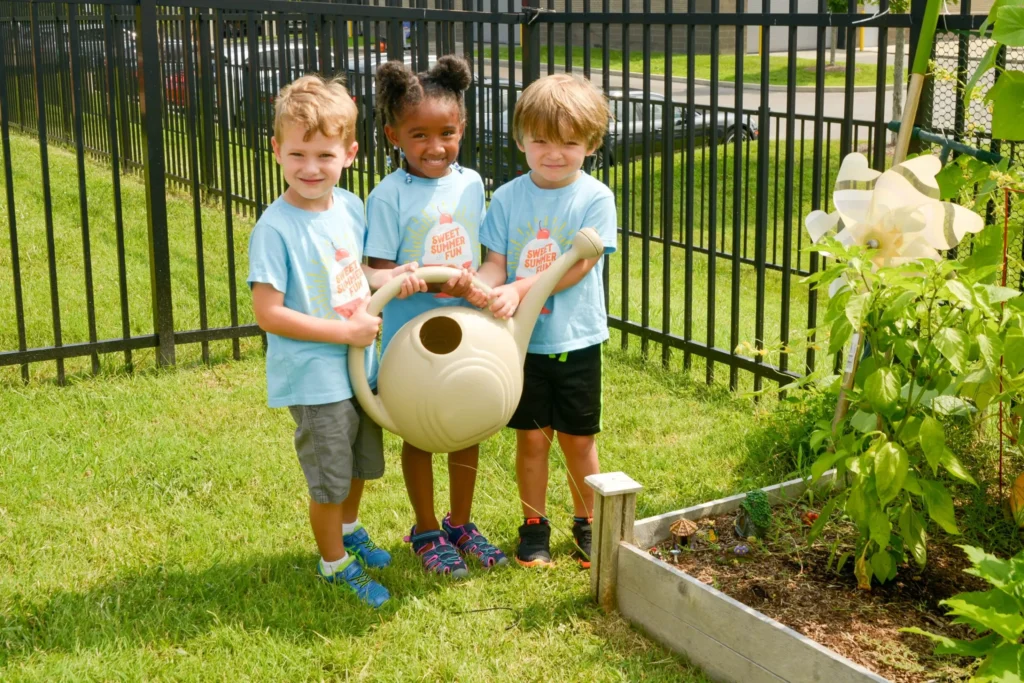
Provide small pots, scoops, watering cans, and child-safe seeds like beans, marigolds, or lettuce. Let the children fill the pots, plant the seeds, water them, and place them in a sunny spot.
This activity teaches responsibility, patience, and biological understanding. Add simple labels with each child’s name, encouraging ownership and ongoing observation.
Rainy Day Puddle Play
Not every spring day will be sunny—and that’s okay. Light rainy days create opportunities for controlled puddle play, which can be joyful and educational.

Dress children in boots and raincoats and guide them in safe puddle jumping, water pouring, or floating spring leaves. Ask open-ended questions like “Why do some puddles disappear faster?” or “What happens when we step in different ones?”
This builds cause-and-effect understanding, balance, and sensory regulation, all while connecting children to natural weather changes.
Sidewalk Chalk and Nature Brushes
Art doesn’t have to stay indoors. Provide sidewalk chalk for large-scale spring drawings—rainbows, flowers, bugs, or weather scenes. Or let kids use leaves, pine needles, and sticks as “brushes” to paint with water or washable paints on concrete surfaces.
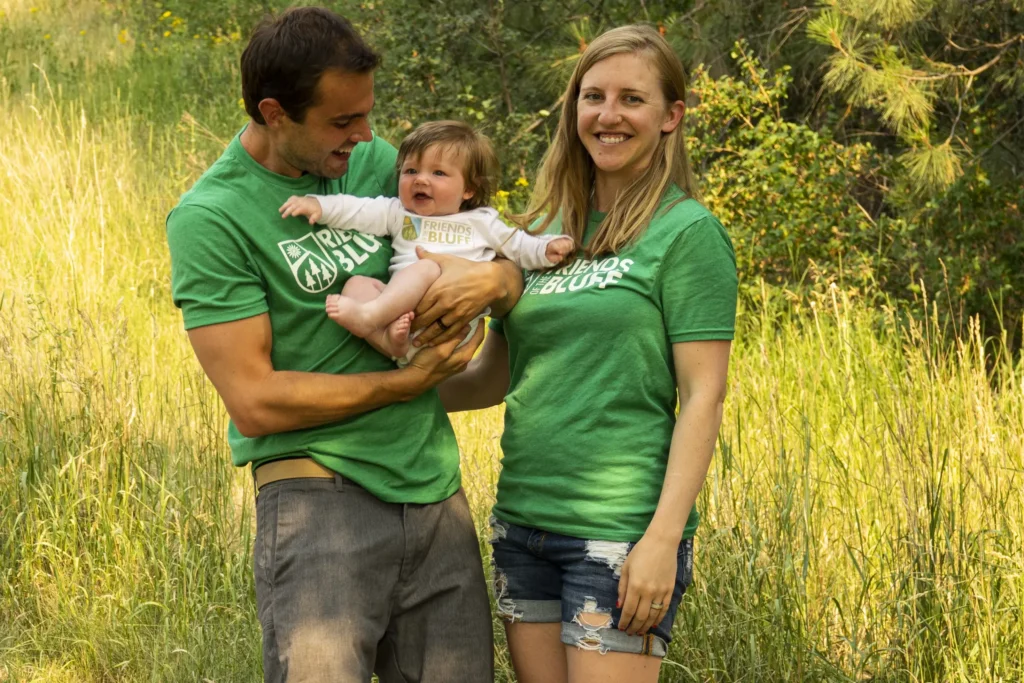
Since outdoor art uses a more significant and less permanent canvas, it builds gross motor skills, spatial awareness, and creative risk-taking. Children can collaborate on large murals or create individual masterpieces in an open-ended way.
Spring Obstacle Course
Set up a simple obstacle course using cones, tunnels, stepping stones, and spring-themed prompts (like “Leap like a frog!” or “Buzz like a bee to the flower!”). Children can run, jump, crawl, and climb their way through while developing coordination and motor planning.
You can even include number or shape stations for added math learning.
This activity supports physical development, self-regulation, and listening skills while burning off energy in a structured way.
Weather Journaling Outdoors
Equip each child with a small clipboard, crayons, and paper. Every day, take five minutes to go outside, sit quietly, and draw the day’s weather. Is it sunny? Cloudy? Breezy?
Children can express their observations using pictures, colors, or simple words. Over time, they begin to notice patterns, build weather vocabulary, and develop a connection between environment and emotion.
This can also be an excellent activity for bilingual kindergartens or international programs to build a cross-linguistic understanding of nature.
Bubble Play and Wind Exploration
Spring is breezy, making it the perfect time for bubble science. Provide different bubble wands and solutions, then encourage free play and observation.
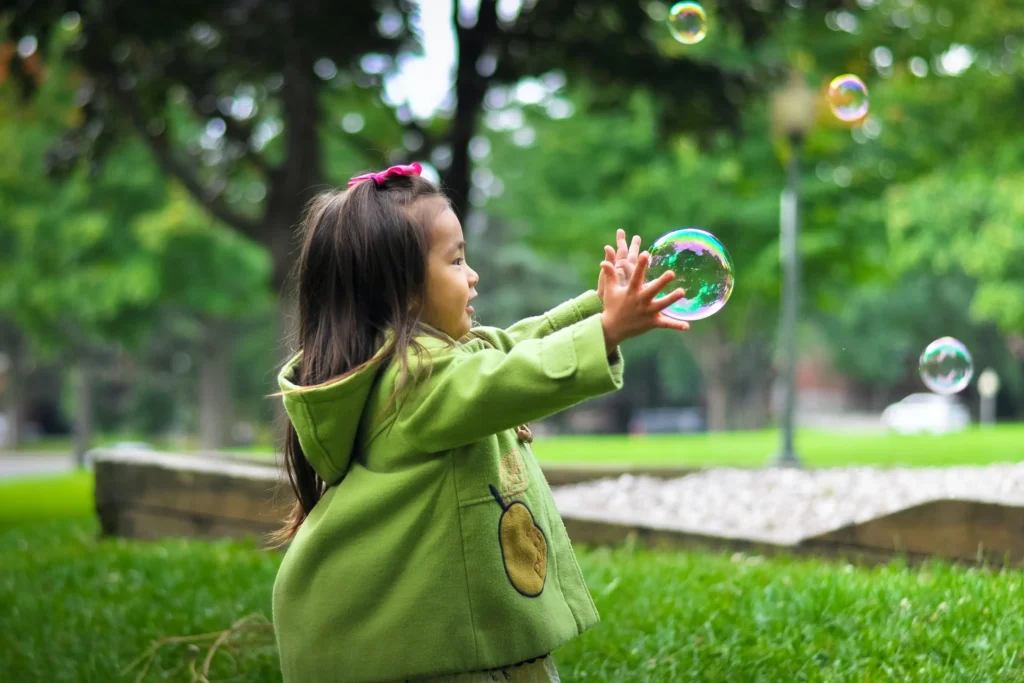
Children can chase bubbles, blow them in different directions, or experiment with how wind affects their flight. You can integrate science concepts like air movement, cause and effect, and even fragility.
Pair this with scarves or pinwheels to let children experience the wind in other tangible ways.
With the right furniture—portable shelves, waterproof storage, and shaded play areas—you can transform your kindergarten’s outdoor space into a complete learning environment. These outdoor spring activities for preschoolers are not just about fun—they’re a critical part of healthy physical, cognitive, and emotional development.
Spring Activities for Sensory
When discussing Spring Activities for Preschoolers, sensory play deserves a spotlight. Sensory activities engage the five senses—sight, touch, sound, smell, and sometimes even taste—and preschoolers learn best this way. Spring’s colors, textures, smells, and breezes offer the perfect natural environment for rich, meaningful sensory experiences.
As someone deeply involved in designing early childhood environments, I always tell my clients that a well-designed sensory area during spring can become the heart of their preschool. It helps regulate emotions, improve focus, and enhance language development—all while giving kids the freedom to explore the world at their own pace.
Below are some of the most effective and easy-to-set-up spring sensory activities for preschoolers, which you can incorporate indoors and outdoors.
Spring Flower Sensory Bin
Create a spring-themed sensory bin using artificial grass, silk flowers, flower pots, scoops, and plastic bugs. Children can arrange flowers, “plant” them in the bin, or sort them by color and type. Combining textures—smooth petals, bumpy bugs, rough soil—creates a multi-sensory experience that stimulates tactile learning.
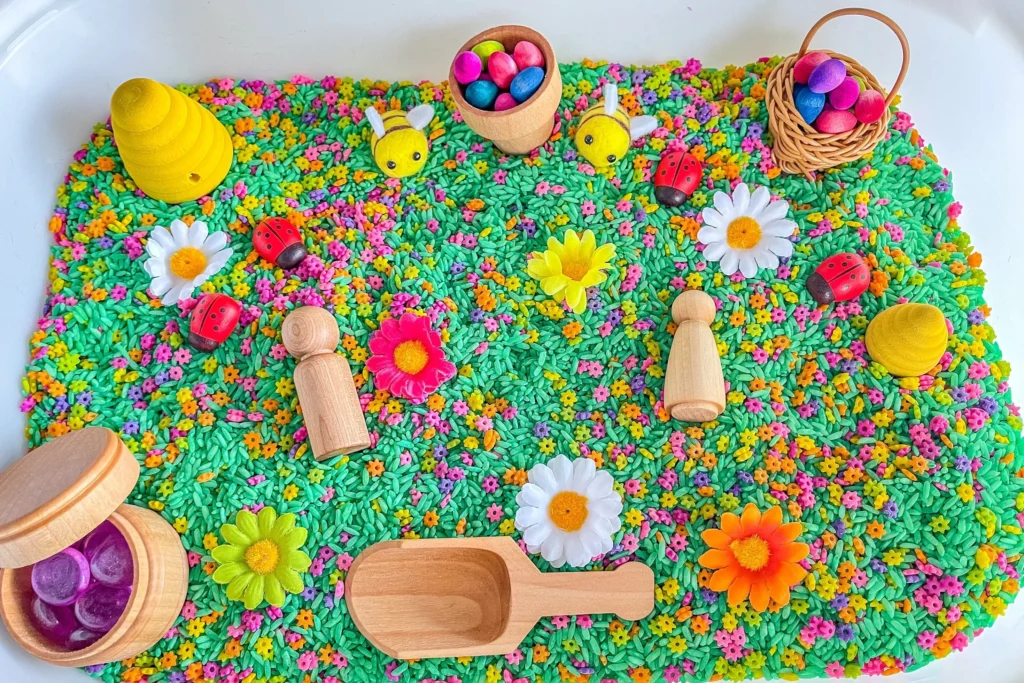
This Spring Activity for Preschoolers supports early STEM thinking and imaginative play, enhancing fine motor coordination and vocabulary development.
Mud Kitchen and Soil Play
Nothing says spring like mud. If your school has an outdoor area, set up a simple mud kitchen using old pots, mixing bowls, wooden spoons, and access to water and dirt. Children can “cook” with mud, mix natural materials, and create spring “recipes.”
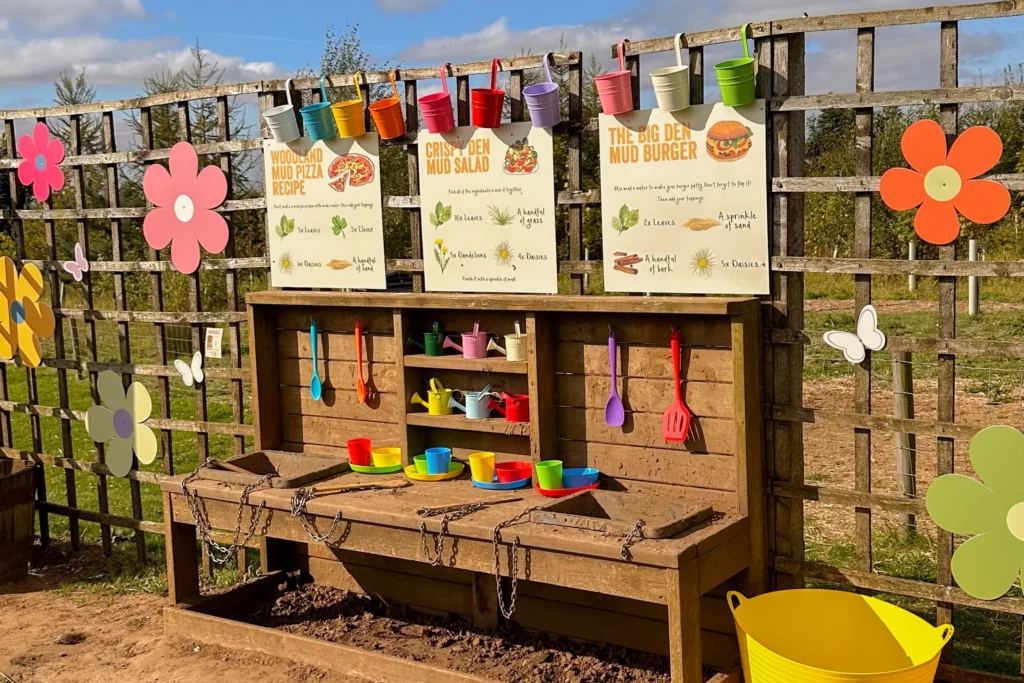
This is one of preschoolers’ most immersive spring sensory activities—it combines touch, smell, and visual exploration while developing creativity and cooperative play.
Mud kitchens are perfect for schools using Montessori—and Reggio-inspired environments, as they align beautifully with a real-world, unstructured exploration philosophy.
Spring Scent Discovery Bottles
Use recycled clear plastic bottles to create spring scent jars filled with items like fresh mint, lemon peels, lavender, pine needles, or flower petals. Children can take turns shaking, sniffing, and guessing the contents. Label the bottles with color-coded lids or simple spring symbols.
This introduces children to the sense of smell as a learning tool. It’s a gentle, quiet activity that supports calm transitions or centers and is one of the most leisurely spring activities for preschoolers to set up with minimal materials.
Texture Walk with Spring Materials
Lay a “texture path” using spring-themed materials like grass, burlap, felt flowers, pebbles, foam raindrops, or even water trays. Children walk across barefoot (if safe) or with socks and describe what they feel: soft, squishy, rough, bumpy.
This activity stimulates body awareness and helps children become more attuned to how they experience the world through touch. You can extend the learning with descriptive vocabulary cards or group discussions.
It’s also excellent for children with sensory processing needs, as it offers a controlled way to explore new sensations.
Spring Sound Station
Nature is noisy in spring—in a good way! Set up a sound exploration corner using bells, rain sticks, chimes, bird call recordings, and musical instruments made with recycled materials. Children can explore how different objects create sound, mimic spring weather (like raindrops or wind), or try making rhythms representing birds or bees.
This supports auditory development, rhythm recognition, and musical creativity. Plus, it ties directly into themes like weather, animals, and outdoor environments.
For schools looking to enrich their Spring Activities for Preschoolers, this is a unique and memorable way to bring sound into sensory play.
Water Play with Spring Accessories
Set up a water table or bin and add spring-themed elements like floating plastic flowers, watering cans, rubber ducks, or miniature frogs. Children can scoop, pour, and splash, improving their fine motor skills and cause-and-effect reasoning.

Add ice cubes and observe their melting to make it more educational, or add containers of different sizes to explore measurement.
Water is a classic sensory spring activity for preschoolers. It becomes deeply connected to the season with just a few themed items.
These Spring Activities for Preschoolers help create an emotionally balanced, cognitively rich, and profoundly engaging classroom experience. When children engage their senses, their brains activate more areas for learning and memory retention. With all its beauty and variety, spring offers the best natural backdrop for this kind of play.
Spring Activities for Blocks and STEM
When we think of Spring Activities for Preschoolers, STEM learning might not be the first thing that comes to mind—but it should be. Spring offers an opportunity to introduce young children to early science, technology, engineering, and math concepts through open-ended block play and problem-solving activities.
At TOP Montessoris, I’ve seen firsthand how kindergartens benefit from blending seasonal themes with classic STEM setups. Whether building bug habitats or testing water flow, children can explore core concepts like balance, structure, force, and design—all in playful, creative ways.
Here are a few spring-themed block and STEM activities to inspire imagination, experimentation, and teamwork.
Build a Bug Hotel
Spring means bugs are back—and children are fascinated by them. To create a bug hotel, use wooden blocks, cardboard tubes, straws, and small sticks. Children can stack and arrange materials to build tiny “rooms” for pretend insects or real ones they find in the garden.

This encourages engineering thinking, problem-solving, and an understanding of animal habitats. You can simultaneously tie it into nature themes, science observations, and imaginative play.
This is one of those Spring Activities for Preschoolers that feels like play—but builds deep foundational STEM skills.
Raindrop Marble Runs
Use tubes, ramps, and connectors to build a spring-themed marble run that simulates falling rain. Challenge children to design a path where “raindrops” (marbles) travel from cloud to ground. You can enhance it with blue materials, paper raindrops, or weather-related decorations.
This activity introduces children to gravity, speed, trajectory, and problem-solving. Working in small groups also builds communication and collaboration.
It’s a smart way to turn STEM into seasonal storytelling—especially when placed in a Reggio-inspired block area or construction corner.
Garden Engineering Challenge
Provide loose parts like wooden planks, blocks, small fences, and toy flowers. Challenge children to design and build a mini spring garden. Where will the flowers grow? How can we make paths for people and bees? What structures do we need to protect the plants from wind?

This activity integrates design thinking into pretend play, helping children explore layout, space, and environmental elements. It’s also an excellent opportunity to include early math skills, such as shape recognition or spatial reasoning.
Build a Bridge Over the Puddle
Set up a pretend “puddle” using blue fabric or water trays, and ask children to build a bridge using blocks, bricks, or recycled materials. The bridge should be strong enough to hold a toy animal or car. Children test, adjust, and rebuild—learning from each try.
This task brings together engineering, trial-and-error, and fine motor coordination. It’s a challenge that keeps them engaged and thinking critically—all within a fun, spring-themed context.
Incorporating block play into your list of Spring Activities for Preschoolers doesn’t require expensive technology. With open-ended materials and a seasonal prompt, you create opportunities for authentic learning that connect science, math, and creativity.
The key is to prepare flexible learning zones—mobile shelves for block storage, accessible building mats, and dedicated STEM corners—that adapt to the seasons. As a manufacturer, we specialize in this, where your learning environment starts making a long-term difference.
Conclusion
Spring is more than just a season—it’s a classroom without walls. With the right Spring Activities for Preschoolers, we can turn every flower, raindrop, and breeze into a learning opportunity. Whether counting petals, building bug hotels, or exploring textures in the garden, spring offers endless ways to support early development through play. As educators, buyers, or school owners, it’s our job to create the spaces and experiences that let learning bloom—naturally.
At West Shore Furniture, we’ve spent over 20 years helping kindergartens bring these learning moments to life worldwide. As a dedicated manufacturer and supplier of preschool furniture, we provide one-stop solutions—from classroom layout and custom design to production, quality control, and delivery. Whether you’re furnishing a new center or updating your learning environment for spring, we’re here to support every step of the journey—with quality, reliability, and care built into every piece.
Let’s make this spring a discovery season for every child in every classroom.



